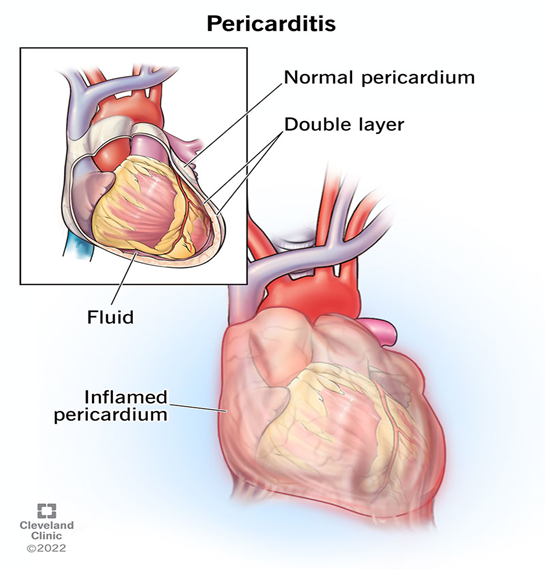A nurse is providing discharge teaching for a client who was admitted with diabetes insipidus. Which of the following teaching topics should be prioritized?
Frequency of urination
Change in appetite
Benefit of medical alert bracelet
Weight gain or loss
The Correct Answer is C
Choice A Reason:
While monitoring the frequency of urination is important for managing diabetes insipidus, it is not the most critical aspect of discharge teaching. Diabetes insipidus causes excessive urination, and patients should be aware of this symptom. However, understanding the importance of wearing a medical alert bracelet is more crucial for ensuring immediate and appropriate care in emergencies.
Choice B Reason:
Changes in appetite are not a primary concern for patients with diabetes insipidus. The condition primarily affects fluid balance and urine output rather than appetite. Therefore, this topic is less relevant compared to the need for a medical alert bracelet.
Choice C Reason:
The benefit of a medical alert bracelet is paramount for patients with diabetes insipidus. In case of an emergency, the bracelet can inform healthcare providers about the patient’s condition, ensuring they receive appropriate and timely treatment. This can be life-saving, especially if the patient is unable to communicate their medical history.
Choice D Reason:
Weight gain or loss can be a secondary concern for patients with diabetes insipidus, as the condition primarily affects fluid balance. While it is important to monitor weight to assess fluid status, it is not as critical as ensuring the patient understands the importance of wearing a medical alert bracelet.
Nursing Test Bank
Naxlex Comprehensive Predictor Exams
Related Questions
Correct Answer is ["A","C"]
Explanation
Choice A Reason:
Acetaminophen is often used to manage pain and fever associated with pericarditis. It is a common analgesic and antipyretic that helps alleviate discomfort without causing significant gastrointestinal side effects. However, it does not have anti-inflammatory properties, so it is typically used in conjunction with other medications that address inflammation.
Choice B Reason:
Amiodarone is an antiarrhythmic medication used to treat and prevent various types of serious irregular heartbeats, such as ventricular tachycardia or ventricular fibrillation. It is not typically used for treating pericarditis, as it does not address the inflammation or pain associated with the condition.
Choice C Reason:
Indomethacin is a nonsteroidal anti-inflammatory drug (NSAID) that is effective in reducing inflammation and pain associated with pericarditis. NSAIDs are commonly prescribed for pericarditis to help manage symptoms and reduce inflammation. Indomethacin, along with other NSAIDs like ibuprofen, is often part of the first-line treatment for this condition.
Correct Answer is ["C","D"]
Explanation
Choice A Reason
Acetaminophen is often used to manage pain and fever, but it is not the primary treatment for pericarditis. While it can help alleviate discomfort, it does not address the inflammation associated with pericarditis12.
Choice B Reason:
Amiodarone is an antiarrhythmic medication used to treat and prevent various types of serious irregular heartbeats, such as ventricular tachycardia or ventricular fibrillation. It is not typically used for treating pericarditis, as it does not address the inflammation or pain associated with the condition.
Choice C Reason:
Colchicine is recommended as part of the first-line treatment for pericarditis. It helps reduce inflammation and the risk of recurrent pericarditis when used in conjunction with NSAIDs5. Colchicine is effective in managing symptoms and preventing recurrences.
Choice D Reason:
Indomethacin is a nonsteroidal anti-inflammatory drug (NSAID) that is effective in reducing inflammation and pain associated with pericarditis. NSAIDs are commonly prescribed for pericarditis to help manage symptoms and reduce inflammation. Indomethacin, along with other NSAIDs like ibuprofen, is often part of the first-line treatment for this condition.
Choice E Reason:
Nitroglycerine is primarily used to treat angina (chest pain) and heart failure by dilating blood vessels and reducing the heart’s workload. It is not typically used for treating pericarditis, as it does not address the inflammation or pain associated with the condition.

Whether you are a student looking to ace your exams or a practicing nurse seeking to enhance your expertise , our nursing education contents will empower you with the confidence and competence to make a difference in the lives of patients and become a respected leader in the healthcare field.
Visit Naxlex, invest in your future and unlock endless possibilities with our unparalleled nursing education contents today
Report Wrong Answer on the Current Question
Do you disagree with the answer? If yes, what is your expected answer? Explain.
Kindly be descriptive with the issue you are facing.
